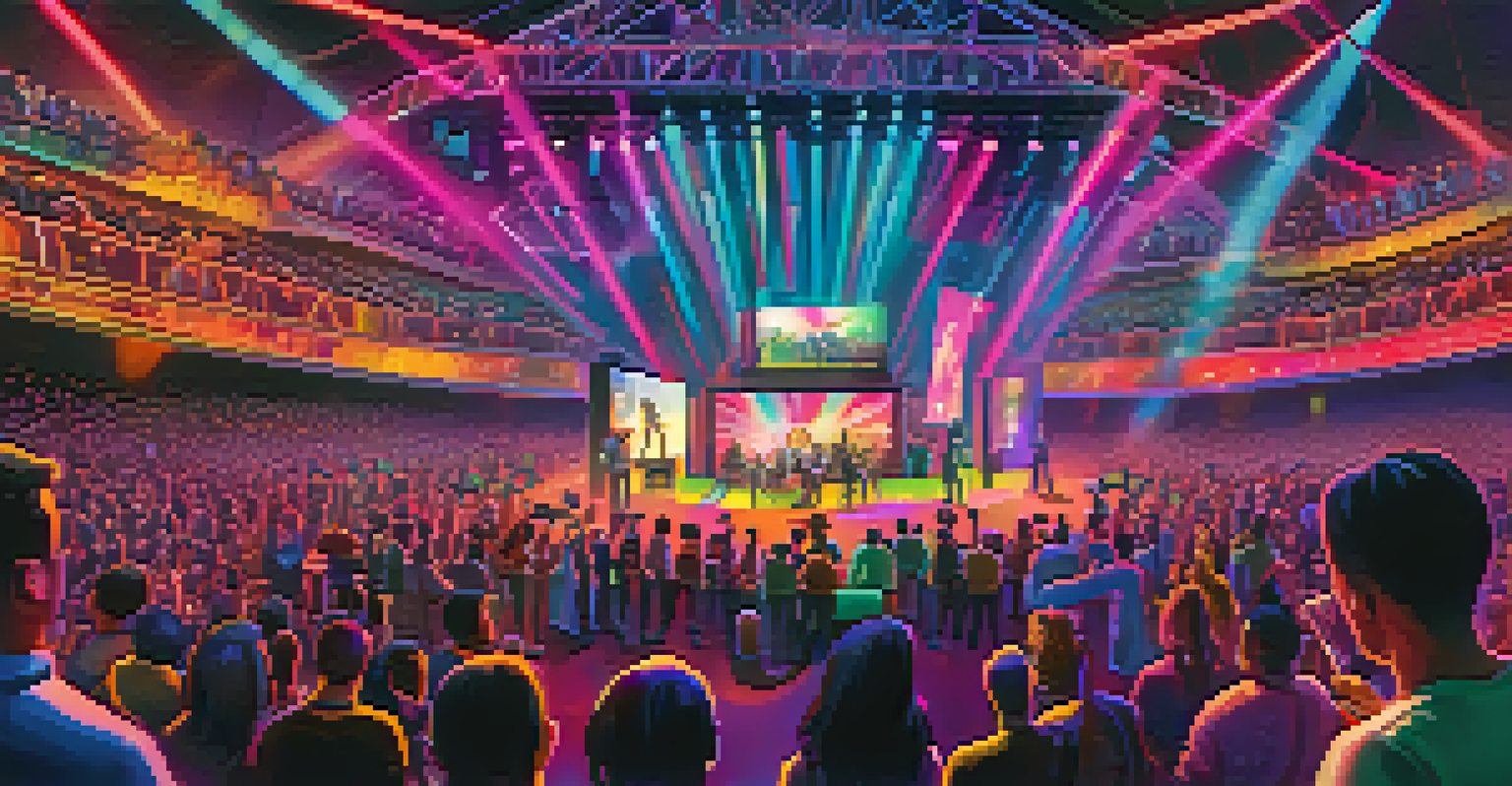Understanding NFTs: A New Era of Digital Authenticity

What Are NFTs and Why Do They Matter?
NFTs, or non-fungible tokens, are unique digital assets that represent ownership of a specific item or piece of content on the blockchain. Unlike cryptocurrencies such as Bitcoin, which are interchangeable, each NFT is distinct and cannot be replaced or exchanged on a one-to-one basis. This uniqueness is what gives NFTs their value and significance in the digital realm.
NFTs are a new way of thinking about ownership and value in the digital space.
The rise of NFTs has transformed the way we think about ownership and authenticity in the digital space. Imagine owning a one-of-a-kind piece of art that exists only in the digital world; that’s the essence of an NFT. Artists, musicians, and creators can now sell their work directly to collectors, bypassing traditional gatekeepers.
As the digital landscape evolves, NFTs represent a shift towards recognizing the value of digital creations. They not only provide a new revenue stream for creators but also allow collectors to own a piece of digital history, making the concept of ownership in the digital age more tangible.
How Do NFTs Work: The Technology Behind Them
At the core of NFTs is blockchain technology, which serves as a secure and transparent ledger for all transactions. Each NFT is created through a process called minting, where a digital asset is transformed into a unique token on the blockchain. This process ensures that the NFT can be traced back to its original creator, providing a layer of authenticity.

Smart contracts, another key component of NFTs, are self-executing contracts with the terms of the agreement directly written into code. These contracts facilitate transactions without the need for intermediaries, ensuring that creators receive royalties for their work every time the NFT is sold or resold. This not only empowers artists but also fosters a fairer ecosystem.
NFTs Redefine Digital Ownership
NFTs provide a unique way for creators to sell digital assets directly to collectors, transforming the concept of ownership in the digital age.
Overall, the technology behind NFTs is what makes them revolutionary. By leveraging blockchain and smart contracts, NFTs ensure that digital ownership is secure, verifiable, and transparent, paving the way for new forms of digital interaction and commerce.
The Role of NFTs in Art and Creativity
NFTs have made waves in the art world, allowing artists to sell their work in ways that were previously unimaginable. Digital artists can now create unique pieces that collectors can buy, sell, and trade, all while retaining the original copyright. This shift has democratized the art market, enabling a wider range of artists to gain recognition.
The future is already here — it's just not very evenly distributed.
Consider the story of Beeple, a digital artist who sold an NFT for $69 million. This monumental sale not only highlighted the potential of NFTs but also raised questions about the value of digital art itself. It spurred discussions about authenticity, ownership, and the future of artistic expression in a digital age.
As more artists embrace NFTs, we’re seeing a blending of technology and creativity. This new medium encourages experimentation and innovation, allowing creators to explore new formats and audiences while redefining what it means to own art in a digital context.
NFTs Beyond Art: Exploring Other Use Cases
While NFTs are often associated with art, their applications extend far beyond that realm. From music and video to virtual real estate and gaming, NFTs are being used to authenticate and monetize a wide range of digital assets. For example, musicians can release exclusive tracks as NFTs, providing fans with unique content and experiences.
In the gaming industry, NFTs are revolutionizing how players interact with virtual items. Gamers can buy, sell, and trade in-game assets as NFTs, giving them true ownership of their digital possessions. This not only enhances the gaming experience but also creates new economic opportunities within gaming environments.
NFT Technology Ensures Authenticity
Blockchain and smart contracts underpin NFTs, ensuring secure and verifiable ownership while enabling creators to earn royalties on their work.
Furthermore, NFTs are being explored in sectors like fashion, sports, and even real estate. Imagine owning a virtual piece of prime real estate in a digital metaverse or collecting limited-edition sneakers as NFTs. The possibilities are endless, and as technology continues to evolve, so too will the ways we utilize NFTs.
The Environmental Impact of NFTs: A Double-Edged Sword
Despite their innovative potential, NFTs have come under scrutiny for their environmental impact, primarily due to the energy consumption of blockchain networks. The process of minting and trading NFTs often relies on proof-of-work systems, which require significant computational power and energy. This has raised concerns about the carbon footprint associated with NFTs.
Many in the NFT community are aware of these challenges and are actively seeking solutions. Some platforms are transitioning to more energy-efficient blockchain technologies, such as proof-of-stake, which significantly reduce energy usage. Additionally, initiatives aimed at offsetting carbon emissions are gaining traction, as creators and collectors strive to lessen their environmental impact.
Ultimately, the discussion surrounding the environmental implications of NFTs is crucial. As we embrace this new technology, it’s essential to find a balance between innovation and sustainability, ensuring that the digital future we create is not only exciting but also responsible.
Navigating the NFT Marketplace: Tips for Buyers
Entering the NFT marketplace can be overwhelming, especially for newcomers. With numerous platforms, from OpenSea to Rarible, choosing the right one is vital. Start by doing your research and familiarize yourself with different marketplaces, their fee structures, and the types of NFTs available before making a purchase.
When considering an NFT purchase, it’s essential to evaluate the creator’s reputation and the uniqueness of the piece. Look for verified accounts and assess previous sales to gauge the NFT's potential value. Just like in traditional art collecting, understanding the provenance and story behind an NFT can greatly influence its desirability.
NFTs Have Diverse Applications
Beyond art, NFTs are being utilized in music, gaming, fashion, and real estate, showcasing their versatility in authenticating and monetizing digital assets.
Lastly, consider your budget and be cautious about emotional spending. It’s easy to get swept away in the excitement of owning a unique digital asset, but setting a budget can help you make more informed decisions. Remember, the NFT market can be volatile, and it’s important to invest wisely.
The Future of NFTs: Trends to Watch
As we look to the future, the evolution of NFTs is likely to be shaped by several emerging trends. One significant trend is the integration of NFTs with virtual and augmented reality, creating immersive experiences for users. Imagine attending a virtual art gallery showcasing NFT artworks or participating in a concert with exclusive NFT access.
Another trend is the growing interest from businesses and brands in utilizing NFTs for marketing and engagement. From loyalty programs that offer exclusive NFT rewards to major brands launching NFT collections, companies are recognizing the potential to connect with consumers in new and innovative ways.

Ultimately, the future of NFTs is bright and full of possibilities. As technology advances and more people become familiar with digital assets, we can expect to see even more creative applications and integrations in our everyday lives, making NFTs a staple of the digital economy.